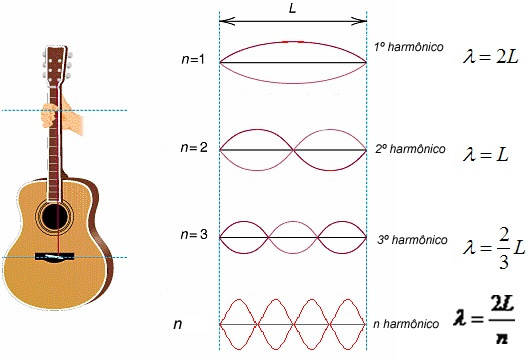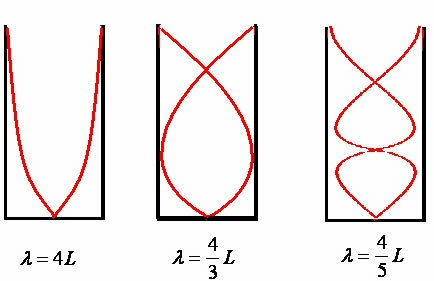Who doesn't like to listen to good music? There are songs for all tastes.
The musical sound, in general, is the one that presents itself in a pleasant way to our ears, whose sound wave presents a certain regularity. Musical instruments are devices that produce this type of sound.
Musical instruments are classified into three groups, string instruments, brass instruments and percussion instruments. How physics explains the workings of these instruments is what we will see now.
String instruments
If we take a moment to think about it, we can list a large number of string instruments: guitar, violin, piano, harp, guitar, double bass, etc. In these instruments, the sound is produced from strings, which when triggered cause compressions and rarefactions in the air, called sound waves.
Also called vibrating strings, the strings of musical instruments, when they vibrate, produce transverse waves that, superimposed on those reflected at the ends, give rise to a standing wave.
The simplest mode of string vibration characterizes its fundamental frequency, corresponding to the vibration between the string's fastening ends (knots) and a midpoint. The second vibration mode corresponds to end nodes and a node at the center point. The third mode corresponds to one more node between the extreme nodes, and thus, each new mode of vibration corresponds to one more intermediate node.
The distance between two consecutive nodes corresponds to half a wavelength.
 and the oscillation frequency is given by,
and the oscillation frequency is given by,  where v is the velocity of the wave on the string.
where v is the velocity of the wave on the string.

vibrant strings
wind instruments
Wind instruments are made up of sound tubes. It is very easy to remember these instruments: saxophone, trombone, trumpet, flute, etc.
If you blow into a glass bottle, for example, you will see it make a sound. This happens because the column of air inside the bottle vibrates, emitting a sound wave. The production of this wave at one end is due to a device called an embouchure. The end opposite the mouthpiece can be open or closed giving rise to two types of sound tubes, open and closed.
In open tubes, the longitudinal standing wave that forms has a belly at both ends. The simplest mode of vibration corresponds to a node at the center point of the tube. With each new mode of vibration, another intermediate node appears.
The distance between two consecutive bellies is equal to half the wavelength.  and the frequency is given by:
and the frequency is given by:  .
.

open sound tubes
In closed sound tubes, the longitudinal standing wave has a belly at the end of the mouthpiece and a knot at the closed end. For each existing vibration mode, keep the node at the closed end and increase an intermediate node.
The distance between the belly and the consecutive node corresponds to a quarter of the wavelength  .
.

closed sound tubes
Percussion instruments behave very differently from others. The sounds emitted by them can have their origins from the vibrations of membranes, rods and metallic surfaces, which makes it difficult to establish a pattern of behavior for them.
By Kléber Cavalcante
Graduated in Physics
Brazil School Team
waves - Physics - Brazil School
Source: Brazil School - https://brasilescola.uol.com.br/fisica/a-fisica-os-intrumentos-musicais.htm
